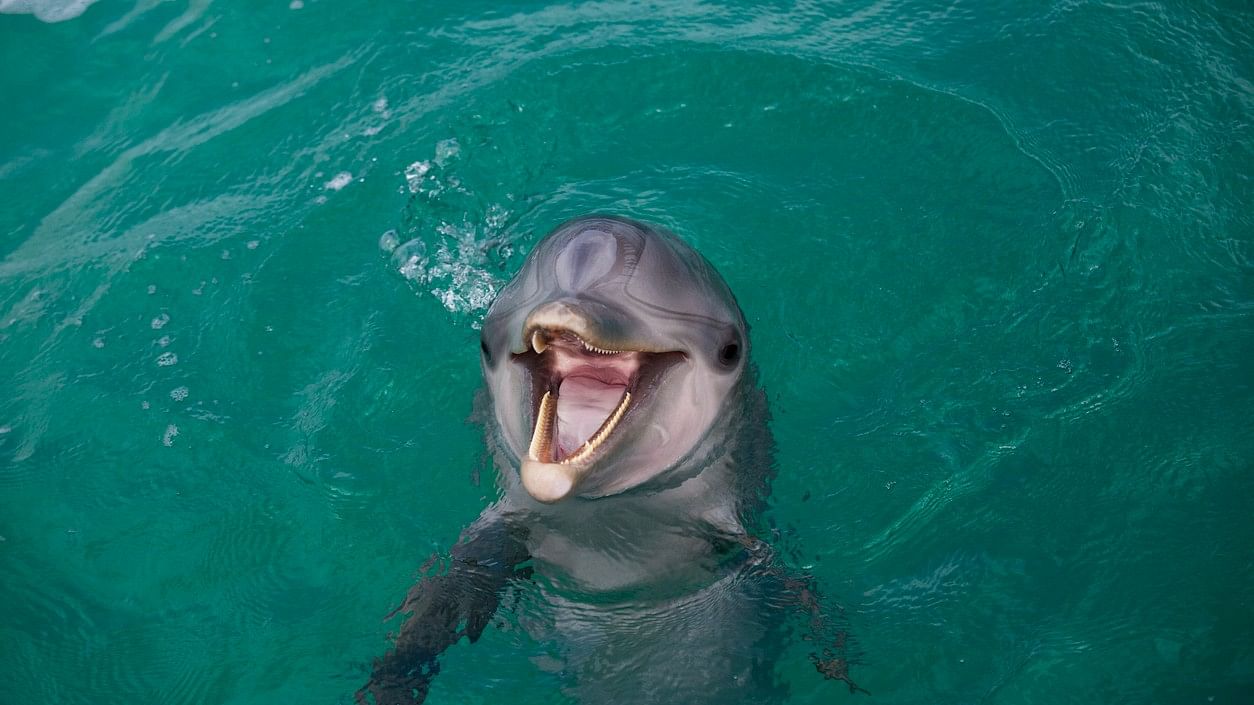
Photo for representational purpose.
Credit: iStock photo
New Delhi: An open-mouthed expression that dolphins use for each other while playing and being reciprocated about a third of the time, could be a "smile", researchers have found.
The smile was almost always used when a dolphin was in their playmate's field of view, the team, including researchers from the University of Pisa in Italy, found after analysing 80 hours of video footage of dolphins engaging in social play amongst themselves as well as with human trainers.
They recorded a total of 1,288 open-mouthed smiles, 92 per cent of which occurred while the mammals were playing with each other.
Further, a dolphin was more likely to smile when their face was in the field of view of their playmate, the researchers said. About 89 per cent of the smiles were found to occur in this manner.
The team also found that the chances of a playmate reciprocating the smile within a second was found to be 13 times more when they see it, compared to when they do not see it.
This back-and-forth exchange of smile-like facial expressions "strikingly" matches with that seen in social primates and carnivores, they said.
"We've uncovered the presence of a distinct facial display, the open mouth, in bottlenose dolphins, and we showed that dolphins are also able to mirror others' facial expression," Elisabetta Palagi, an evolutionary biologist at the University of Pisa and senior author of the study published in Cell Press journal, said.
"Open-mouth signals and rapid mimicry appear repeatedly across the mammal family tree, which suggests that visual communication has played a crucial role in shaping complex social interactions, not only in dolphins but in many species over time," Palagi said.
The researchers said dolphins' "anatomical smile", along with their eyes, round heads, and tendency to play make them popular with humans. The marine creatures' play can include acrobatics, surfing, playing with objects, chasing, and playfighting.
While mammals are known to use facial expressions to convey playfulness, the researchers said that marine mammals such as dolphins engaging in smiling and reciprocating had not been previously explored.
"The open mouth gesture likely evolved from the biting action, breaking down the biting sequence to leave only the 'intention to bite' without contact. The relaxed open mouth, seen in social carnivores, monkeys' play faces, and even human laughter, is a universal sign of playfulness, helping animals -- and us -- signal fun and avoid conflict," Palagi said.
However, the dolphins did not appear to use the smile when playing with humans or by themselves, the authors found.
"The open mouth display was mainly emitted during social play than during solitary and occurred more frequently when the sender was in the receiver's field of view, suggesting that animals are attentive to the playmate's attentional state," the authors wrote.
According to Palagi, the 'smile' could be argued as dolphins merely mimicking each other's open mouth expressions by chance, given that they are involved in the same activity.
"... but this doesn't explain why the probability of mimicking another dolphin's open mouth within 1 second is 13 times higher when the receiver actually sees the original expression," the evolutionary biologist said.
"This rate of mimicry in dolphins is consistent with what's been observed in certain carnivores, such as meerkats and sun bears," Palagi said.